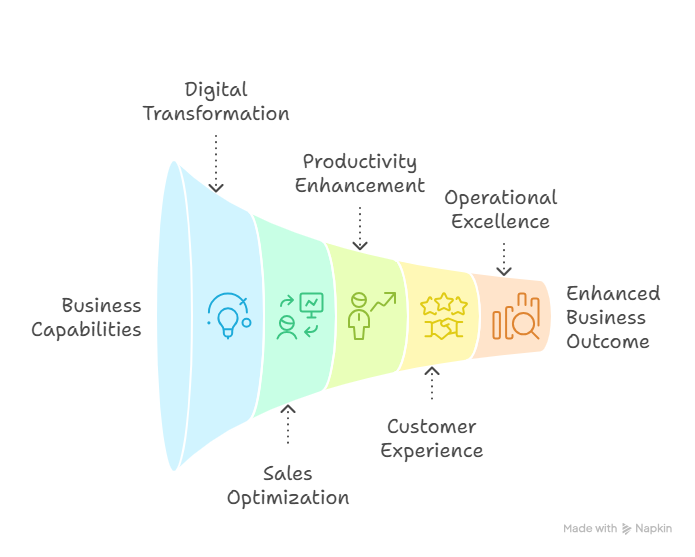Picture this: it's late at night, you have a problem, and a chatbot appears with instant answers. Convenient. However, there are moments when no response can replace the nuanced understanding needed in the situation.
Chatbots excel at speed, availability, and handling routine requests. Human agents excel at empathy, complex problem-solving, and building trust. Neither side is a clear "winner" in customer service; the right solution depends on what your customers value most.
In this article, we'll weigh the trade-offs and practical examples to uncover where each approach truly delivers.
Here's the truth: chatbots outperform humans in certain areas. Let's break down exactly where they win.

Chatbots don't need sleep, vacations, or sick days. When a customer in Japan needs to check their order status at 3 AM your time, or someone has a quick question on Christmas Day, the chatbot is ready to help.
This means customers get instant help any time of day or night. No waiting until Monday morning or business hours.
For example, an online store gets 30% of its customer questions outside regular business hours. Before chatbots, these customers had to wait 12 hours or more for answers. Now they get help immediately.
Think about the repeating questions your team answers over and over every day. These questions drive human workers to fatigue because they're so repetitive. But chatbots handle them perfectly every single time.
When you free up your human team from answering these same questions fifty times a day or more, they can focus on more challenging problems that actually require human skills.
Even if a human eventually solves the problem, chatbots can still help by:
- Greeting the customer instantly (no waiting in the queue)
- Collecting basic info like order numbers or account details
- Figuring out which department should handle the question
- Telling customers how long they'll wait for human help
This cuts your response time from minutes or hours down to seconds. Customers feel heard immediately, even if they still need to speak with a representative later.
For example, if you have a busy season, such as a Black Friday traffic spike or a new product launch that requires handling a large number of questions. Chatbots hold the extra volume instantly. You don't need to hire temporary workers, train new staff, or pay overtime. The bot just keeps working.
Human workers have good days and bad days. They might explain your return policy slightly differently depending on their mood, experience, or how busy they are.
Chatbots consistently provide the same correct answer based on the documentation every time. Your customers always get accurate, consistent information about your policies, pricing, and procedures.
Additionally, every conversation is automatically saved. You can see what customers are asking about most, identify gaps in your help content, and quickly spot product issues.
How Skynet Agent Studio Makes Customer Service Automation Actually Work
Building good customer service automation used to require months of development work and the expertise of technical experts. But not anymore.
Skynet Agent Studio revolutionizes the game for businesses seeking more brilliant customer service without the headaches.
With Skynet Agent Studio, you can create AI agents that handle your most common customer questions automatically. Simply provide your existing FAQ documents, help articles, and examples of past customer conversations as a knowledge base.
Your agents use your brand voice for customers and can respond around the clock. No coding required, no technical team needed.
For example, you can design your agent workflow on a Monday morning, test, and iterate. By lunch, you have a working customer service agent who can answer questions.
Your new AI agents work seamlessly with your current setup; you only need to select the organizational service to use—no switching between different systems. Everything connects and works together.
Instead of one confused bot trying to handle everything, create focused agents for specific jobs, for example:
- Level 1 Support Agent - Handles FAQs, basic troubleshooting, and simple requests
- Order Management Agent - Tracks shipments, processes returns, updates delivery info
- Billing and Payments Agent - Resolves payment questions, explains charges, and handles refunds
- Technical Support Agent - Provides product-specific help and advanced troubleshooting
Each agent is an expert in their area, but they can collaborate when customer problems cross departmental boundaries.
AI is getting better, but it's still not perfect. Here are the areas where AI chatbots or agents can fail.
Chatbots don't understand emotions very well. When a customer is stressed, angry, or worried, a robotic response can exacerbate the situation.
For example, a customer reports a serious bug that's breaking their business. The chatbot responds with: "Thanks for reaching out! Have you tried checking our FAQ section? "
This feels cold and dismissive when someone's genuinely upset. It can turn a frustrated customer into a furious one who tells everyone about their bad experience.
Chatbots work great when the answer is in their training data. However, when something unusual, new, or complicated arises, they fall short.
By the time the issue escalates, the customer's time may have been wasted.
Excellent customer service still needs the human touch. Here's where people consistently outperform AI chatbots.
Humans excel at reading emotions, showing empathy, and de-escalating tense situations. They can listen between the lines and respond to what customers are really feeling.
Humans can be emotionally intelligent and address the emotions first before providing solutions, whereas a chatbot might not.
Real life is messy. Customer problems don't always fit neatly into categories, and sometimes you need to bend the rules or find creative workarounds.
And in situations like this, you need humans who can think outside the box and make judgment calls.
Experienced human agents notice patterns and warning signs that prevent bigger issues. For example, a human notices that several customers this week have inquired about the same confusing part of your checkout process. They alert the product team, who fixes the design before it causes hundreds more support tickets.
Or they might hear a customer mention a competitor's new feature and pass that intelligence to your product team.
The best companies don't pick sides in the human vs bot debate. They use both strategically in a seamless system.
Step 1: Instant First Contact
When a customer reaches out by chat, email, or social media, the AI agent replies right away. It greets them in your brand voice, asks a few quick questions, and checks if the issue can be solved immediately.
Step 2: Quick Fixes or Smart Intake
For simple requests like tracking an order or resetting a password, the bot provides answers instantly with links and clear instructions. For more complex issues, it gathers key details such as account information, order numbers, and what the customer has already tried, so nothing gets lost.
Step 3: Smart Routing
If human assistance is required, the AI directs the case to the appropriate person based on the issue, customer value, language, or agent expertise. Premium customers receive priority service, and technical problems are directed to tech support. Newer agents handle routine tasks.
Step 4: Full Context for Agents
When the handoff happens, the human agent sees everything—conversation history, customer details, past tickets, and account info. The customer doesn't have to repeat themselves, and the agent can jump straight to solving the problem with empathy and skill.
Step 5: AI Support in the Background
As the agent works, the AI suggests help articles, pulls up similar cases, recommends next steps, drafts follow-ups, and updates records automatically.
Step 6: Follow-Up and Continuous Learning
After resolution, the bot sends surveys, follow-up emails, and case summaries. It also identifies trends and updates the knowledge base. Every interaction helps the system become smarter at routing, making suggestions, and automating tasks.
If your team is drowning in repetitive tickets, struggling with time zones, or facing seasonal spikes, it's a clear sign you're ready for chatbots. They handle common questions, such as order tracking, returns, or password resets, instantly, so that agents can focus on real problems. This reduces burnout, improves response times, and makes scaling during product launches or holiday rushes much easier.
Chatbots work best when backed by solid resources, such as FAQs, help guides, and clear policies. A quick test: if over 40% of tickets are repetitive and your team feels like human FAQ machines, automation can be a valuable solution. With strong documentation and frequent support challenges, chatbots enable you to scale faster, reduce costs, and enhance customer satisfaction without expanding your support team at the same pace.
Remember that the best customer service combines the efficiency of technology with the empathy of humans. Don't pick sides - use both strategically to create experiences that make customers happy and keep your business growing.
The companies winning at customer service aren't choosing between humans and chatbots. They're using both intelligently to create something better than either could deliver on their own.
